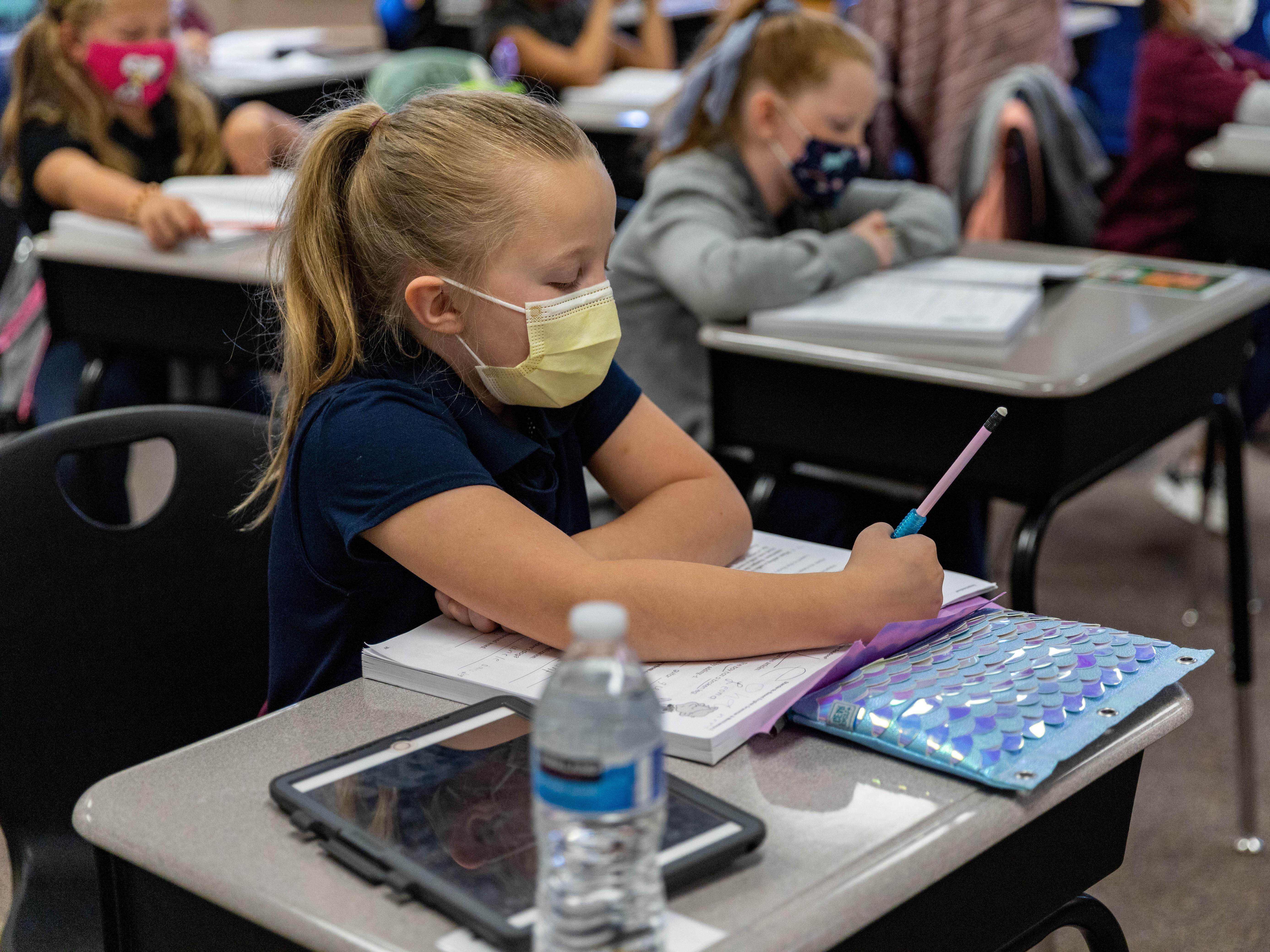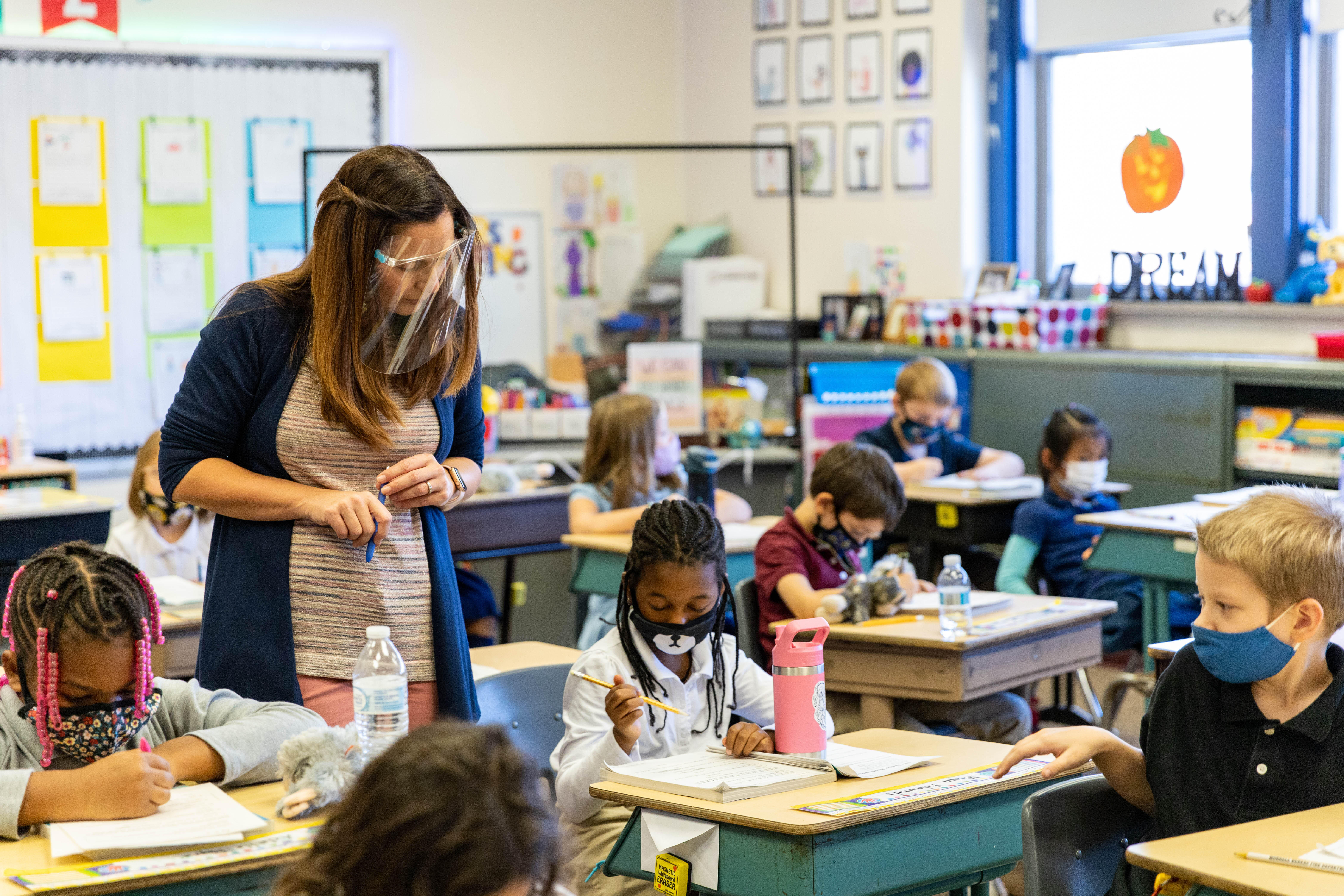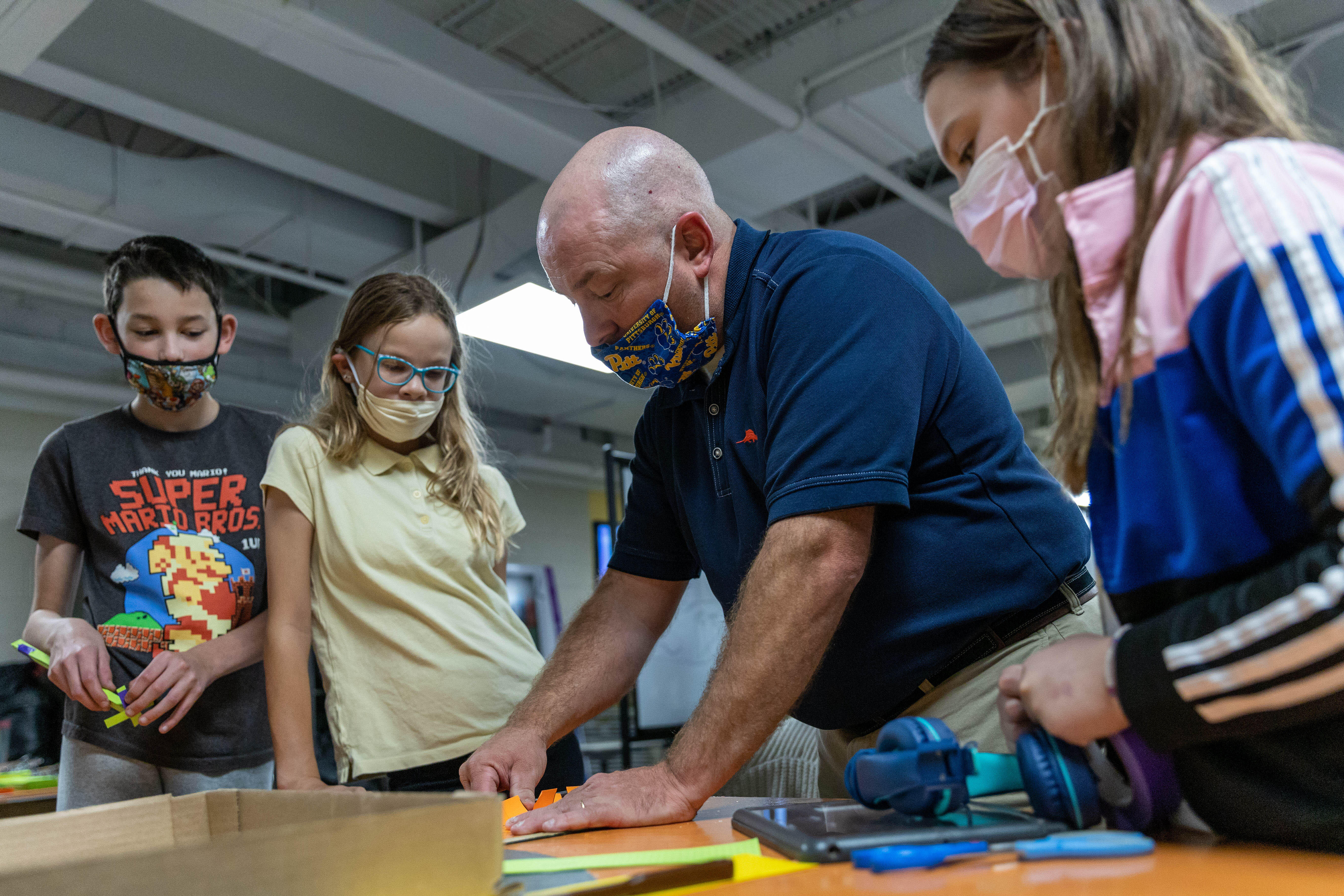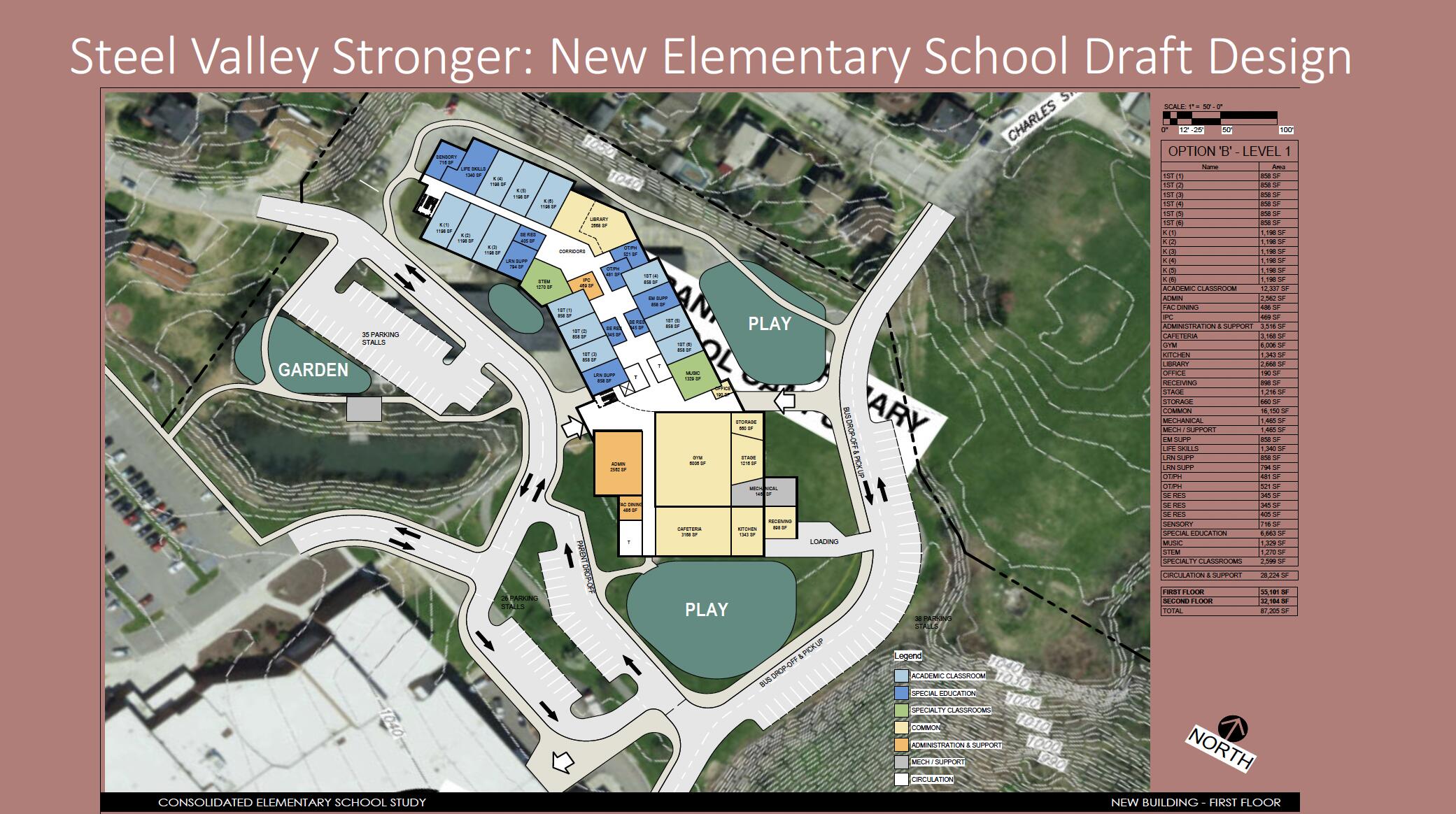ABOUT STEEL VALLEY STRONGER
The Steel Valley School District is at an important crossroads as we look to define our future. We face a budget deficit of roughly $3 million and devote an additional $7 million per year to charter school expenses. We have aging infrastructure, as evidenced by the recent need to replace the boiler at Park Elementary. The COVID-19 pandemic has reinforced the need for school districts to provide greater support to students and families. We have needs, but we also have an opportunity to address them and position the district to be take some significant steps forward.
Thanks to federal funding through the American Rescue Plan, we have approximately $5 million that we must spend between now and September 2024. We can use these funds to finance substantial one-time costs, purchase new curriculum, provide academic supports and programs to combat learning loss, and more.
In December, superintendent Edward Wehrer made a presentation to the Steel Valley School District Board of Directors and the community. The presentation detailed Mr. Wehrer's plan to position the district for the future by tackling the aging infrastructure and by emphasizing the district's academics, health, equity and inclusion, and career readiness initiatives.
The presentation can be clicked through below or read as a PDF on the district web site.
After you review the presentation, feel free to look around the rest of the web site to see more details on how each of the initiatives makes Steel Valley stronger.

ACADEMICS: The emphasis on academics will feature a multi-tiered system of support, which means that students will have escalating levels of resources and assistance available to them depending on their academic needs. It will align the curriculum between the two elementary schools so that the classroom experience is consistent. It will also ensure that the curriculum aligns with state standards. There will be a strong focus on students with Individual Education Plans (IEPs), with an emphasis on Least Restrictive Environment in classrooms and disproportionality in discipline. This initiative will be led by assistant superintendent Mr. Bryan Macuga, Park Elementary Principal Dr. Thomas Shaughnessy, and Middle School Principal Ms. Rebecca Bragan.

HEALTH: Much like academics, this initiative has a multi-tiered system of support that addresses each child's needs on an individual basis. The district has a strong partnership with the UPMC Children's Hospital of Pittsburgh, exemplified by regular visits by the Ronald McDonald Care Mobile. This initiative will also include the adoption of our version of the Whole School, Whole Community, Whole Child concepts designed by the Centers for Disease Control. This area will be led by Director of Pupil Personnel Dr. Lisa Mumau and by Barrett Elementary Principal Mr. Kevin Walsh.

EQUITY AND INCLUSION: Like academics and health, this initiative features a multi-tiered system of support that provides services and programs to students based on their individual needs. We have already forged partnerships with outside agencies to meet those specific needs and will continue to enhance those offerings. Equity is not just a local challenge in Steel Valley, but our greatest national challenge. Everything we do needs to be done through the lens of equity. This initiative will be led by our Diversity, Equity and Inclusion Coordinator Mr. Olando Dulin and by High School Principal Mr. John Strom.

CAREERS: This point of emphasis will be one of the leading areas of focus in Phase Two. Steel Valley will create a credential system that recognizes when a student has the requisite skills for success in a given career and help supply that student with additional information regarding that potential career path. We will continue to work with existing partners like PNC and their Partner Up program as well as the Consortium for Public Education and their Future Is Mine program.
A NEW ELEMENTARY SCHOOL
As Mr. Wehrer outlined in his presentation, the mission of the Steel Valley School District is to ensure, "All of our people are healthy and thriving, which means that we have healthy and thriving schools. The vision for the district is that, by 2025, all of our students learn together in a new elementary school building.
How do justify two elementary schools with such stark racial, socioeconomic and performance differences in a district of roughly four square miles? The age of the buildings is showing.
The district tapped Draw Collective - formerly VEBH Architects - to conduct a feasibility study for a new K-4 elementary school on the Campbell Campus. The feasibility study means any plan for an elementary school is just theoretical at this stage. Such a plan will require approval by the school board and will include further engagement with the entire Steel Valley community before it is approved. However, should a plan for a new elementary school be approved and move forward, it would provide all of our K-4 learners with a state-of-the-art educational environment. It would include a two-story library and media center, STEAM/innovation centers, small-group instructional areas, and other common, necessary elements that are difficult to wedge into our existing buildings.
By centralizing the campus in this theoretical proposal, all K-12 students would be able to learn together in neighboring buildings. The theoretical plan could also include transportation for students in grades K-8, and it would be undoubtable proof of Steel Valley's investment in the futures of our community and our families.
Please see below for just one example of a hypothetical design and placement of a new elementary building.

If the district were to move forward with a plan like this, what would happen to the existing buildings? Franklin would likely need to be torn down or renovated as part of the new construction project. Barrett would be converted for central office functions and non-traditional learning. Classrooms in the main building would be rented to Pre-K programs and classrooms in the Campbell addition would provide healthcare services for students, families and the community. Park would be demolished, with the land used for development or sold for renovation into housing. The building would not be left vacant.
Costs are the primary factor for any proposed project. Early estimates for construction of a new building would run at approximately $32 million for the school and an additional $500,000 per year for transportation. Some of the financing could come from borrowing (we continue to pay for the high school), a capital fundraising campaign. new development in the district (every $10 million in real estate value provides $250,000 in tax revenue for the district), student recruitment from charter schools (every charter school student who lives in our district costs us an average of $20,000 per year), and staff attrition through retirements.
Those numbers are theoretical. If any construction plan moves forward and is approve by the district, the financial outlook will be updated to reflect the more precise information.
.png)
.png?mask=1)